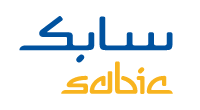
26 Jan 2016
SABIC LEXAN™ resin brings light and color to award-winning auditorium and conference center
Sittard, The Netherlands, January 26, 2016 - The “El Batel” state-of-the-art building in Cartagena, Spain, covers 17.000 m² and was designed by renowned Spanish architects José Selgas and Lucía Cano. Crowned with the prestigious Biennial Spanish Architecture award, El Batel’s design is influenced by the harbor and sea.
In addition to its eye-catching architectural design, the building is known for the use of innovative materials, made locally in Cartagena. SABIC supported this award-winning project through the development of a polycarbonate material with special luminescent pigments. The result is a special grade of LEXAN™ resin, a polycarbonate that enables light transmission and the creation of color effects inside and outside the building. Furthermore, LEXAN™ resin helps to absorb sunlight and to illuminate the corridors at night. A total of 110 tons of LEXAN™ resin was used to create a surface of more than 1.500m² in tubes and façade profiles. SABIC collaborated with Polimer Tecnic, the molder responsible for the design feasibility, to supply the material in specific colors and sizes on a strict deadline.
For more information on how SABIC is helping to realise customers’ ambitions, please visit the Gold Stevie® Award winning site STORIES OF POSSIBLE by clicking here.
Reader enquiries
SABIC
WTC Tower Ten Strawinskylaan 1475
1077 XX Amsterdam
Netherlands
Notes for editors
In a pioneering series of films, SABIC demonstrates how the company supported the development of a new grade of LEXAN™ in support of the City of Cartagena’s innovative approach:
• SABIC contributes materials for Cartagena’s innovative cultural and business centre
• Exterior cladding completed with specially developed grade of LEXAN™ polycarbonate enabling “bright innovation”.
• SABIC and brands marked with ™ are trademarks of SABIC or its subsidiaries or affiliates.
• High-resolution photos are available upon request.
• SABIC should be written in every instance in all uppercase.
ABOUT SABIC
Saudi Basic Industries Corporation (SABIC) ranks as the world’s third largest diversified chemical company. The company is among the world’s market leaders in the production of polyethylene, polypropylene and other advanced thermoplastics, glycols, methanol and agri-nutrients.
SABIC recorded a net profit of SR 23.3 billion (US$ 6.2 billion) in 2014. Sales revenues for 2014 totaled SR 188.1 billion (US$ 50.2 billion). Total assets stood at SR 340 billion (US$ 90.7 billion) at the end of 2014.
SABIC’s businesses are grouped into Chemicals, Polymers, Agri-Nutrients, Metals and Innovative Plastics. It has significant research resources with innovation hubs in five key geographies – USA, Europe, Middle East, South East Asia and North East Asia. The company operates in more than 50 countries across the world with around 40,000 employees worldwide.
SABIC manufactures on a global scale in Saudi Arabia, the Americas, Europe and Asia Pacific.
Headquartered in Riyadh, SABIC was founded in 1976 when the Saudi Arabian Government decided to use the hydrocarbon gases associated with its oil production as the principal feedstock for production of chemicals, polymers and fertilizers. The Saudi Arabian Government owns 70 percent of SABIC shares with the remaining 30 percent publicly traded on the Saudi stock exchange.
Related images
Editorial enquiries
Aline Stanworth
SABIC
Claudia Hammerich
SABIC

